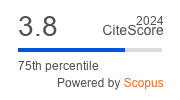Article | Open Access
Materiality in the Seam Space: Sketches for a Transitional Port City Dome District
| Views: | 2673 | | | Downloads: | 1217 |
Abstract: Biomass material volatility generates new opportunities for port-city relationships. Alternative energy markets require specialized port facilities to handle new bulk commodities like biomass. Wood pellets, a type of biomass, present warehousing challenges due to combustion danger. The industrial response to this risk has generated new storage forms for port regions. The return to bulk cargo reintroduces materiality as a focus for port city research, which had generally been regarded as a peripheral concern since the advent of the shipping container. The container had come to represent a borderless, ‘fast capitalism’ throughput model, but research on port ‘accidents’ has complicated this reductive globalization narrative. The programmatic dynamism of wood pellet dome structures suggests new spatially-porous possibilities for an interstitial border space at the port-city interface with material commonalities and hybrid potentials for resilient logistics and civic facilities. In contrast to container cargo unitization, the dome signifies the standardization of the coastal/riparian port environment. Dome structures can help ports plan for the complex challenges of cargo material behaviors and increasing extreme weather events. The article begins with wood pellet materiality to then explore programmatic possibilities that industrial construction technology generates. Conceptually, this joins the proposal of port as ‘seam space’ with port-city resilience planning and the porosity celebrated in recent urbanism literature. Scaling up from wood pellet materiality to an interstitial port-city district, the article contributes to calls for increased attention to materiality as a means to envision new urban agendas.
Keywords: biomass; energy transition; logistics; materiality; port geography; seam spaces
Published:
© Stephen J. Ramos. This is an open access article distributed under the terms of the Creative Commons Attribution 4.0 license (http://creativecommons.org/licenses/by/4.0), which permits any use, distribution, and reproduction of the work without further permission provided the original author(s) and source are credited.


